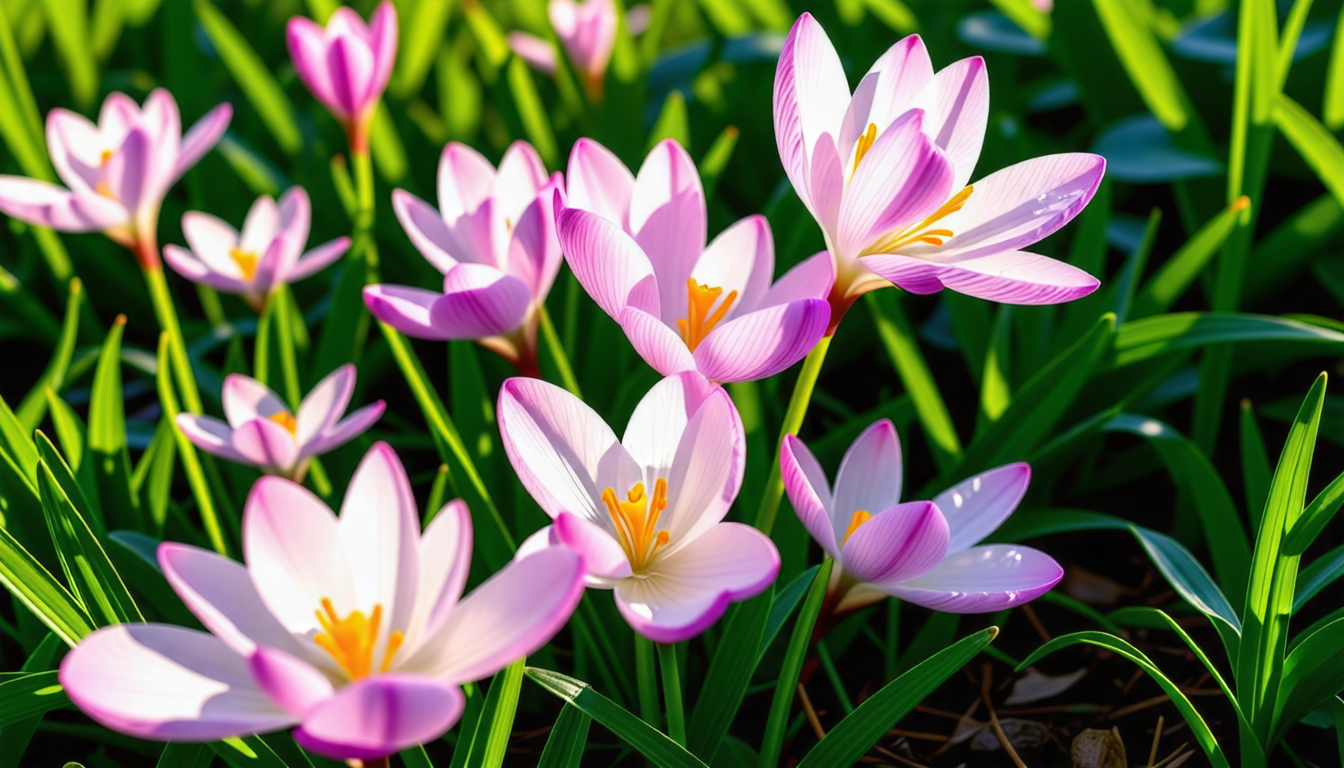Garden Alert: The Enchanting Beauty of Colchicum Conceals a Deadly Threat

In the world of horticulture, beauty often walks hand in hand with danger, and Colchicum is a prime example of this paradox. Known for its stunning fall blooms, this plant captivates gardeners and nature lovers alike. However, hidden within its alluring petals lies a potent toxin called colchicine, which poses serious risks if mishandled or ingested. Understanding the dual nature of this plant is essential for anyone who wishes to cultivate these enchanting flowers while ensuring a safe environment for children and pets.
The mesmerizing allure of the Colchicum plant, often celebrated for its vibrant fall blooms, belies a sinister secret lurking within. This enchanting flower, while beautiful and easy to cultivate, harbors colchicine, a highly toxic substance that poses serious risks to humans and animals alike. In this article, we will explore the stunning complexities of Colchicum, its dangers, and how to appreciate this plant responsibly.
The Allure of Colchicum
Colchicum, commonly referred to as the autumn crocus, awakens the garden in splendid hues just as the last remnants of summer fade away. With flowers emerging from the ground without any accompanying leaves, these blooms create a captivating scene. Varieties such as ‘Waterlily’ flaunt double petals that bring a whimsical touch to any garden. Their beauty is unquestionable, attracting gardeners and visitors in droves, but the charming exterior conceals a hidden peril.
Understanding the Hidden Danger
The colchicine found in all parts of the Colchicum plant is notorious for its toxicity. It can cause severe symptoms, leading to nausea, vomiting, and in extreme cases, death if ingested in large quantities. The CDC warns against its consumption due to its lethality. Therefore, it is critical for gardeners to familiarize themselves with the risks associated with this plant to prevent unfortunate accidents.
Identifying Colchicum
Identification is key when dealing with potentially hazardous flora. Colchicum flowers bloom in the fall and stand out with their large, trumpet-shaped petals, available in various colors from pale pink to deep violet. It’s paramount to recognize these plants and to educate all members of the household, especially children, about the dangers they present.
Safe Cultivation Practices
Growing Colchicum can be a rewarding endeavor if approached with caution. Gardeners must ensure that bulbs are planted out of reach of curious children and pets. The best time to plant is during the summer months, allowing for a seasonal transformation in the garden. When working with these bulbs, wearing gloves is highly advisable to avoid skin contact with their toxic components.
Transforming Spaces with Colchicum
Potted colchicums can transform even the simplest balcony into a stunning display of autumn hues. Using colorful pots can enhance their visual appeal while also minimizing the risk of direct exposure. Grouping several bulbs together will amplify their charm, but always remember to maintain an awareness of their location.
The Diversity of Colchicum Varieties
Despite the risks, various Colchicum species add majestic beauty to gardens. Plants like ‘The Giant’ showcase striking blooms that capture attention and the hearts of both seasoned and novice gardeners alike. Another delightful variety, ‘Violet Queen’, features exquisitely striated petals, making it an elegant choice. By planting them in clusters, you can create stunning visual impacts while adhering to safety measures.
Precautionary Measures
- Avoid planting Colchicum in areas easily accessible to children and pets.
- Wear gloves when handling bulbs and plants.
- Educate all household members on the toxicity of Colchicum.
“Even in beauty, there are hidden dangers. Learn to see beyond appearances.”
Enjoying Colchicum Responsibly
In essence, the allure of Colchicum serves as a reminder of nature’s duality—the coexistence of beauty and danger. By taking precautions and ensuring safe handling practices, one can continue to enjoy the enchanting display of this flower while safeguarding the well-being of loved ones and pets alike. For further insights on the poisonous properties of this enchanting plant, visit this article, which provides a deeper understanding of the plant’s complexities.

